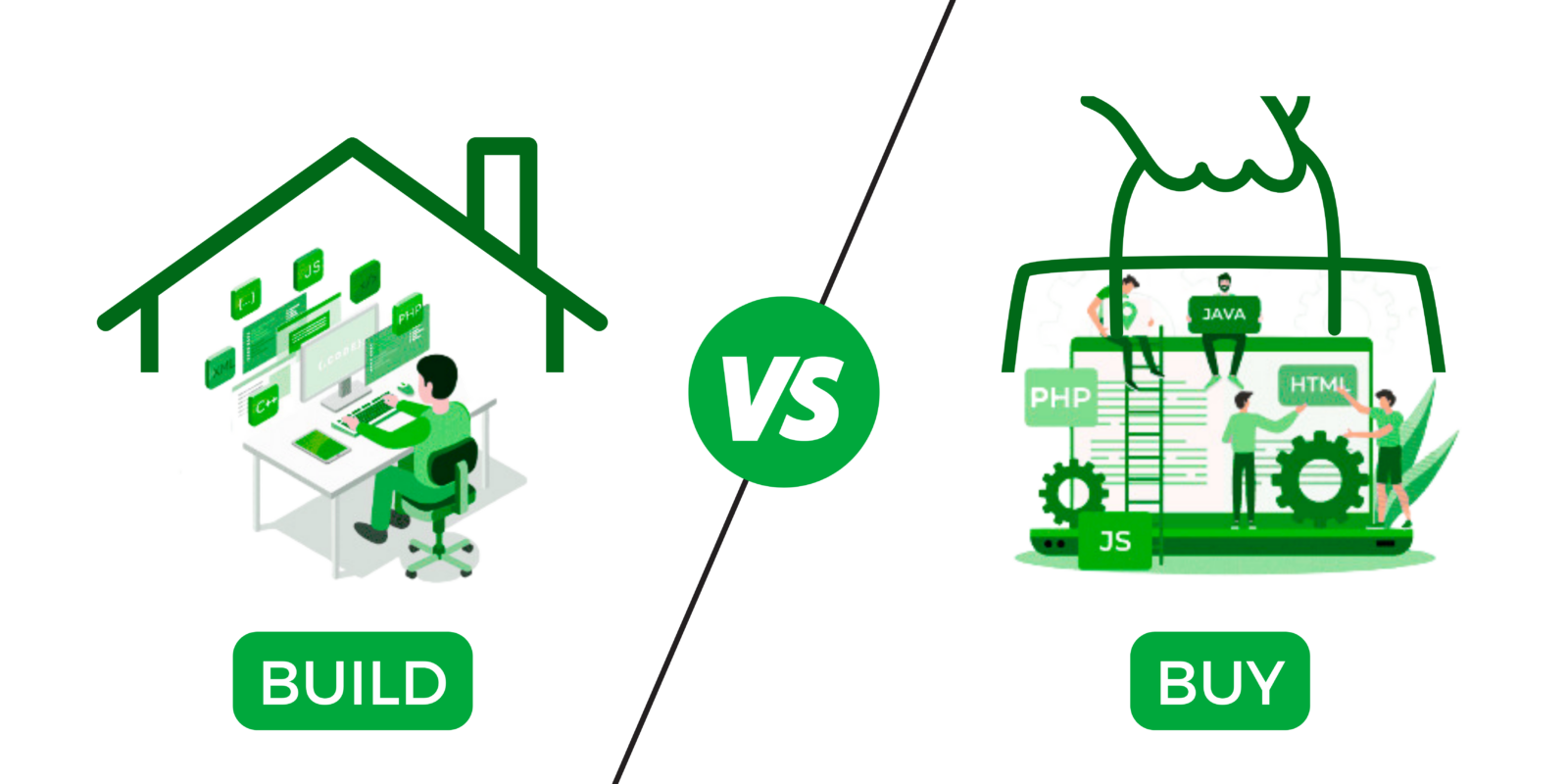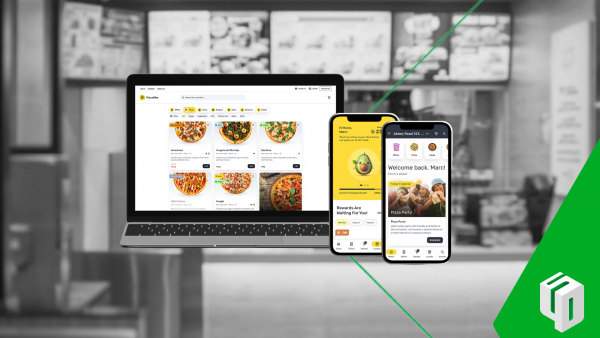What is an omnichannel restaurant tech stack?
An omnichannel restaurant tech stack is a comprehensive suite of interconnected digital tools and platforms designed to seamlessly integrate various touchpoints across the restaurant’s ecosystem. Here’s a breakdown of the key components:
Customer-facing components:
- App: A dedicated mobile application that allows customers to browse menus, place orders, make reservations, and access loyalty rewards.
- Website: An online platform where customers can explore menus, place orders for delivery or pickup.
- Loyalty Program: A system for managing customer loyalty rewards, tracking points, and offering personalized incentives to encourage repeat business.
- Self-Order Kiosk: An ordering platform that reduces employee costs and it is proven to increase the Average Order Value (AOV) by up to 30%.
- Voucher/Discount System: A mechanism for issuing and redeeming vouchers, discounts, and promotional offers, both online and in-store.
In-store components:
- Point of Sale (POS): A robust POS system that facilitates order processing, payment transactions, and inventory management.
- Kitchen Display System (KDS): Digital screens in the kitchen that display incoming orders in real-time, improving order accuracy and kitchen efficiency.
- Driver Management: Tools for managing delivery drivers, assigning orders, tracking deliveries, and optimizing routes.
- Store Management: Software for managing various aspects of store operations, including staffing, scheduling, and performance tracking.
- Store Data Analysis: Systems for collecting and analyzing store data, such as Net Promoter Scores (NPS) and leaderboards, to identify areas for improvement and measure performance.
- Integration with Delivery Platforms: Seamless integration with third-party delivery platforms to streamline order processing and ensure timely deliveries. These are integrated into the POS and KDS.
Headquarter components:
- Strategy Establishment: Tools and processes for establishing overarching strategies to enhance efficiency, optimize sales channels, and reduce dependency on third-party delivery platforms.
- Data Analysis Integration: Integration with PowerBI or similar business intelligence tools for in-depth data analysis, visualization, and reporting.
- Admin Functionality: Administrative functions for managing user permissions, accessing reports, and configuring system settings.
- Brand and Menu Management: Centralized management of brand identity, menu offerings, price points, and promotions across all channels.
- Sales Channel Optimization: Selection and optimization of POS and in-store solutions to improve operational efficiency and drive sales growth, with a focus on establishing strong sales channels (Website, App, POS, Self-Order Kiosk, delivery platforms).
- Data-Driven Customer Acquisition: Leveraging data via META Pixel, Google Tag Manager, and Google Analytics, while incorporating proven best practices gleaned from successful international chains
Why do some restaurant chains choose to build their own omnichannel tech stack?
- Customization: Building in-house allows them to tailor technology solutions precisely to their unique needs, thereby enhancing operational efficiency and effectiveness.
- Leveraging Analytics: Chains can leverage analytics to create more personalized experiences for customers and optimize operations. For instance, if the analytics are applied with expertise they can target to achieve 20% increase in digital sales by 2026 through data-driven strategies.
- Expected Cost-Savings: While the initial investment in building in-house solutions may be higher, there’s an expectation of lower monthly expenses over time. However, the actual cost savings depend on factors such as whether the chain hires its own team (incurring monthly salaries) or engages with an agency (incurring costs for each new addition or modification), both of which can be expensive in their own right.
Why is it more strategic to outsource an already proven omnichannel tech stack?
When considering omnichannel solutions for restaurant chains, there are critical considerations and risks that they are highly likely to face. However, these risks can be effectively mitigated by partnering with an omnichannel provider:
- Complexity of Omnichannel: Managing various touchpoints for customers, in-store employees, and headquarters requires intricate systems and integrations, which can be challenging to develop and maintain independently.
- Resource Allocation: Smaller chains might not have the resources, both in terms of expertise and finances, to build and sustain a custom tech stack. This could lead to inefficiencies and delays in achieving business goals.
- Outsourcing Benefits: Outsourcing development and services to experienced providers specialized in QSR-specific solutions can offer advantages such as continuous improvement, lower initial investment, and access to industry best practices.
- Focus on Core Competencies: By opting for a ready-made omnichannel tech stack, smaller restaurant chains can redirect their focus and resources towards their core competencies, such as serving quality food and enhancing customer experiences.
- Learning from Industry Leaders: Choosing a solution used by leading and fast-growing brands allows smaller chains to learn from successful implementations and avoid common pitfalls in technology adoption.
- Cost of Continuous Innovation: Continuous innovation in technology comes with ongoing costs. Developing and maintaining a custom tech stack requires significant investment in research, development, and upgrades over time. Additionally, building in-house solutions means bearing the entire burden of innovation costs, whereas partnering with a (SaaS) provider allows for shared costs and access to future updates and enhancements.
For example, by leveraging a proven omnichannel solution, you can swiftly integrate innovation across in-store operations and the consumer side. Implementing features like AI Estimated Time of Arrival (ETA), one step beyond Uber Eats’ sticky notifications, not only streamlines operations but also enhances the overall customer experience by providing real-time updates and reducing wait times.
The decision to outsource an omnichannel solution that is purpose-built for Quick Service Restaurants (QSRs) emerges as the most logical choice. By selecting the right provider, one that acts as a partner in achieving business goals and shares in the success of the restaurant chain, restaurants can benefit from: increased direct sales, leveraging data to optimize customer experiences, and even accessing insights derived from collaborative data sharing among restaurant chains.
Contrary to common belief, outsourcing such a solution can actually be more cost-effective than building it in-house.
Let’s break it down with an example:
A chain with 50 locations decides to build its own tech stack. They hire 10 developers with monthly salaries and calculate the hours needed for service maintenance. However, when considering both capital expenditures (major, long-term expenses) and operating expenses (day-to-day expenses), the costs can quickly escalate.
By opting for outsourcing, the chain avoids the hefty investment in hiring and maintaining an in-house development team. Instead, they pay a predictable monthly fee to the service provider, which covers both initial setup and ongoing support. Not only does this reduce upfront costs, but it also provides peace of mind knowing that experts are managing the technology stack, allowing the chain to focus on what they do best: serving their customers delicious meals.





